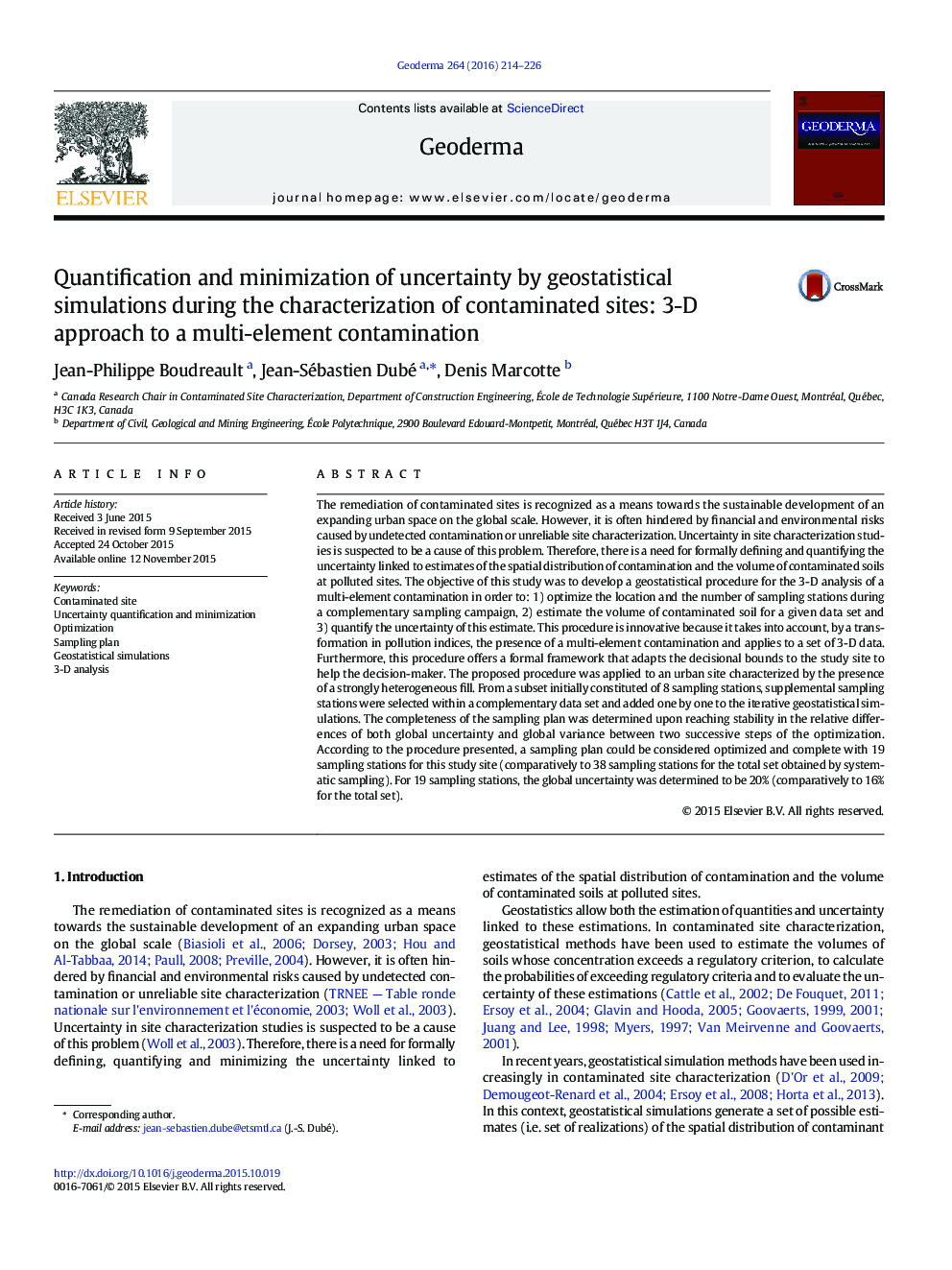| کد مقاله | کد نشریه | سال انتشار | مقاله انگلیسی | نسخه تمام متن |
|---|---|---|---|---|
| 4573099 | 1332418 | 2016 | 13 صفحه PDF | دانلود رایگان |
• Conditional simulations are used to quantify and minimize uncertainty during site characterization.
• Categorization of soil volume is based on the probability of exceeding regulatory thresholds.
• Number and locations of supplementary sampling stations are optimized in 3-D.
• Optimal sampling plan is based on stability of both global uncertainty and global variance.
The remediation of contaminated sites is recognized as a means towards the sustainable development of an expanding urban space on the global scale. However, it is often hindered by financial and environmental risks caused by undetected contamination or unreliable site characterization. Uncertainty in site characterization studies is suspected to be a cause of this problem. Therefore, there is a need for formally defining and quantifying the uncertainty linked to estimates of the spatial distribution of contamination and the volume of contaminated soils at polluted sites. The objective of this study was to develop a geostatistical procedure for the 3-D analysis of a multi-element contamination in order to: 1) optimize the location and the number of sampling stations during a complementary sampling campaign, 2) estimate the volume of contaminated soil for a given data set and 3) quantify the uncertainty of this estimate. This procedure is innovative because it takes into account, by a transformation in pollution indices, the presence of a multi-element contamination and applies to a set of 3-D data. Furthermore, this procedure offers a formal framework that adapts the decisional bounds to the study site to help the decision-maker. The proposed procedure was applied to an urban site characterized by the presence of a strongly heterogeneous fill. From a subset initially constituted of 8 sampling stations, supplemental sampling stations were selected within a complementary data set and added one by one to the iterative geostatistical simulations. The completeness of the sampling plan was determined upon reaching stability in the relative differences of both global uncertainty and global variance between two successive steps of the optimization. According to the procedure presented, a sampling plan could be considered optimized and complete with 19 sampling stations for this study site (comparatively to 38 sampling stations for the total set obtained by systematic sampling). For 19 sampling stations, the global uncertainty was determined to be 20% (comparatively to 16% for the total set).
Journal: Geoderma - Volume 264, Part A, 15 February 2016, Pages 214–226
